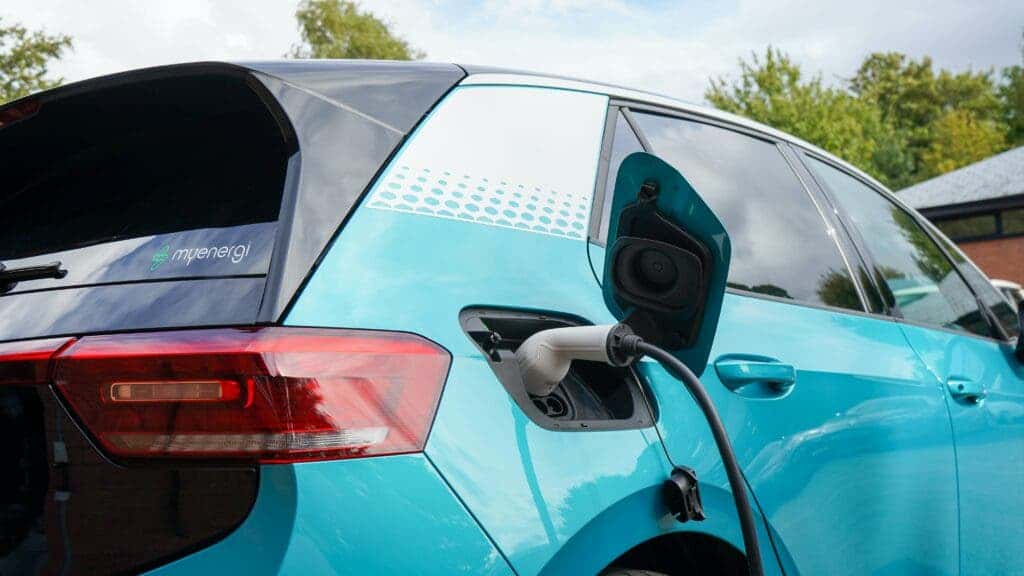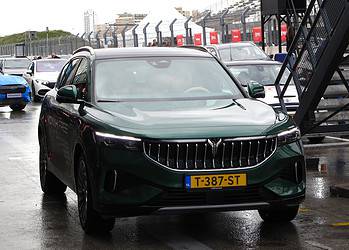The transportation sector accounted for about 29% of all greenhouse gas emissions in the United States in 2019, making it by far the largest source of emissions. And while other sectors and industries have seen their carbon footprints decrease, transportation-related emissions actually increased in absolute terms between 1990 and 2019.
But this is where the incoming electric vehicle (EV) revolution is supposed to come in, right? While it is true that EVs are much better for the environment than gasoline- or diesel-powered automobiles and trucks, they are not exactly emissions-free. As we’ll see, it’s a bit complicated.

Current EVs and their accompanying high-density Li-ion batteries involve energy-intensive processes to manufacture compared to their traditional vehicle counterparts. And when the electricity used to charge the batteries is sourced from fossil fuels, EVs can indirectly contribute to emissions.
But after you crunch the numbers, EVs are still ‘greener’. For instance, a 2020 study by researchers at Cambridge, Exeter, and Nijmegen University found that in 95% of the world, driving an electric car is better for the environment over the course of its lifetime compared to using a gasoline-powered car. Furthermore, the emissions profile of EVs can be improved tremendously using certain strategies.
In a new study, researchers at the University of Michigan conducted comprehensive modeling, analyzing four different charging scenarios for a fleet of electric delivery vehicles. The researchers decided to focus on fleet vehicles because their collective impact on the environment can be more accurately predicted. Most importantly, unified strategies can be directed at the top-down level so all vehicles in a fleet have a similar carbon footprint profile.
This is important in light of recent news such as Amazon announcing it would purchase 100,000 electric vehicles. Likewise, UPS has ordered 10,000 and FedEx pledged to become fully electric by 2040.
Unlike previous life cycle assessment studies that mainly looked at regional and temporal data concerning charging emissions, the researchers now also looked at the impact of charging on battery degradation. For many car owners, as well as for people looking to buy a new car (and are considering electric) the findings can be significant. Battery resilience could make the difference between something like getting the Ford F or the new electric Ford F Lightning, or the gas-based 2022 Kia Telluride vs its electric counterpart, the EV9.
The authors concluded that 50% to 80% of the lifetime emissions of a delivery EV occur during charging. Therefore, the most impactful thing to do is to charge the vehicle from an electric grid that sources a lot of renewable energy. But emissions could be lowered considerably more by as much as 37% simply by optimizing charging strategies.
“Our evaluation strategy leads to two main recommendations for companies investing in fleets of electric vehicles,” said Maxwell Woody of U-M’s Center for Sustainable Systems, lead author of the study.
“The first is to consider battery degradation when determining when to charge and how much to charge. Some charging strategies can extend battery lifetime, and this will both lower greenhouse gas emissions and protect the company’s investment.”
In light of their findings, the researchers have come up with some recommendations for EV fleet managers. The first is rather obvious: do your best to source the electricity used to charge batteries from renewable sources. Local grids can vary wildly in their mix of fossil/renewable energy sources, so companies could find it wise to focus the initial rollout of their EV fleet in regions that provide the greatest carbon-reduction benefits.
Other guidelines were much more insightful. For instance, charging a vehicle to 100% immediately upon returning to the central depot results in the highest emissions. Instead, charging the battery only enough to complete the day’s route, something the researchers call “sufficient charging”, doubled battery life and led to the least emissions.
“Charging the vehicle as soon as it returns and charging the vehicle up to 100% result in a lot of time spent sitting at the depot/charging station with a full battery. This extra time spent fully charged will cause the battery to wear out more quickly — so quickly that the battery may need to be replaced sometime in the vehicle’s lifetime,” said study corresponding author Parth Vaishnav, assistant professor at the U-M School for Environment and Sustainability.
“Creating this additional battery produces additional greenhouse gas emissions, as well as additional costs.”
The same strategies that minimize carbon emissions also led to reductions in cost, which means companies have the perfect incentive to properly manage their fleets. These same practices could then be applied to individual EV drivers and owners.
“The most important finding is that there is a big opportunity here to lower emissions,” said study co-author Greg Keoleian, U-M professor of environment and sustainability and director of the U-M Center for Sustainable Systems.
“Electric delivery vehicles only make up a small proportion of delivery vehicles right now, but that number is expected to increase in the coming years. Establishing the best practices for charging now, as these vehicles are starting to be deployed in larger numbers, is a critical step toward lowering greenhouse gas emissions.”






